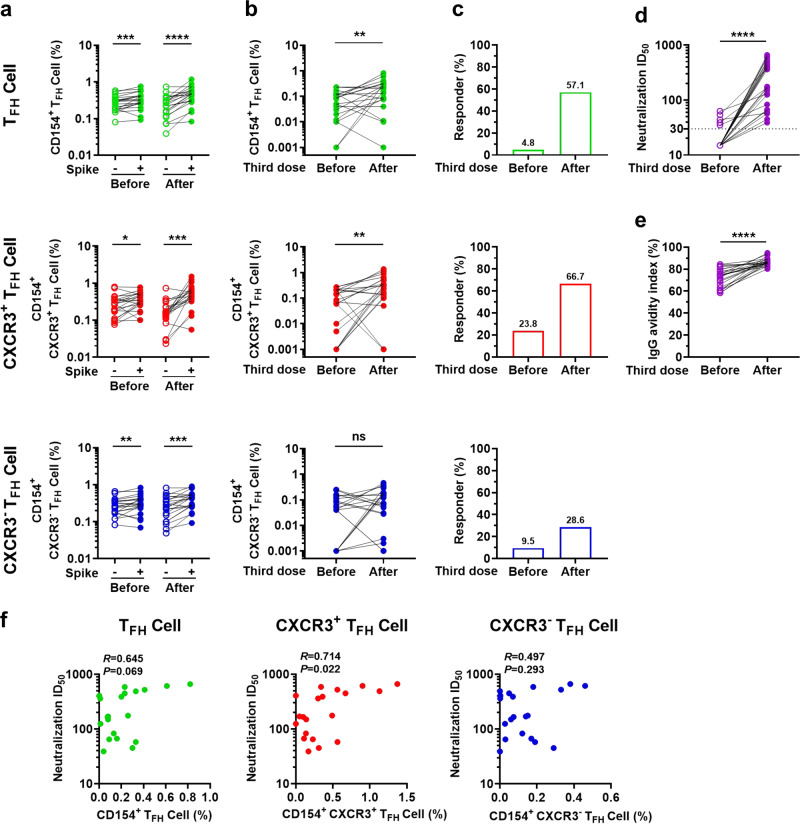Fig. 4.
A third vaccine dose promoted spike-specific antibody potency and maturation. a Frequencies of spike-specific TFH cells, CXCR3+ TFH cells, and CXCR3− TFH cells before and after the third booster dose upon BSA or spike protein stimulation (n = 21). b Comparison of frequencies of spike-specific TFH cells, CXCR3+ TFH cells, and CXCR3− TFH cells (data presented with background subtracted; responses below background are shown as 0.001%) before and after the third booster dose (n = 21), upon spike protein stimulation. c Percentage of spike-specific TFH cell, CXCR3+ TFH cell, and CXCR3− TFH cell responders (stimulation index > 2 was considered to be a positive response) before and after the third booster dose (n = 21). d Neutralization titers before and after the third booster dose (n = 24). The cut-off value was defined as ID50 = 30, and ID50 > 30 was considered to indicate a neutralizing effect. e Spike-specific IgG avidity index before and after the third booster dose (n = 24). For (a, b), and (d, e), paired t test was used to analyze the differences between the two groups, *P < 0.05; **P < 0.01; ***P < 0.001; ****P < 0.0001. P < 0.05 was considered to be a two-tailed significant difference, ns, not significant. f Correlation of the frequencies of spike-specific TFH cells, CXCR3+ TFH cells, and CXCR3− TFH cells (data presented with background subtracted) with neutralization titers after the third booster dose (n = 21). Spearman’s rank correlation coefficient was used to describe the association between the frequency of TFH cells and subsets and the nAb titer. P < 0.05 was considered to be a two-tailed significant difference

